Cultivating plants, sharing seeds and cuttings with neighbors, and seeking better crop varieties are as old as agriculture. We use the word “nursery” for places where we care for and nurture things that are precious and vulnerable, like children and plants. Creating habitats to grow healthy seedlings is an integral part of the farming cycle, an important contribution to a thriving community, and both a rewarding and challenging business opportunity.
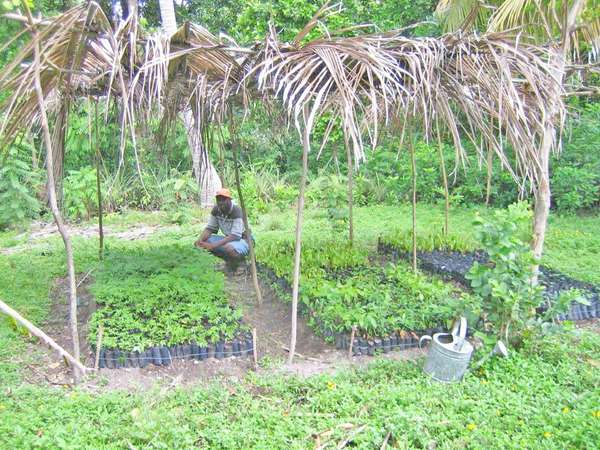
Figure 1. Example of a small-scale tree nursery. Source: ECHO staff
A nursery can be as small as a farmer’s seedbed for the immediate planting of a single crop, or as large as a complex business with hundreds of species and varieties for sale to the public. This Technical Note describes important aspects of planning and running a small nursery (Figure 1) to supply trees and other perennial plants for personal or community use. Content is targeted towards agricultural practitioners working with small-scale farmers in tropical and subtropical climates. Included in the document are comments and insights from people with extensive experience in operating tree nurseries in parts of Central Africa (Roy Danforth), Madagascar (Dan Turk), Guatemala (Dwight Carter), and Haiti/Nicaragua/Indonesia (Rafael Flores).
NURSERY PLANNING
Identify community needs
A good nursery will meet specific needs of the community. Human food security is what we think of most, something that nurseries can address by producing fruit trees and various kinds of vegetables. However, nurseries can also meet needs for greater crop diversity, erosion control, livestock fodder and forage, fuelwood, income generation, nutrition, reforestation, decorative landscaping, and timber.
Roy Danforth worked with a large nursery in Central Africa that supported a tree gardening approach in which trees for construction wood, fencing, and high-value fruits were produced with the same land and inputs used to grow food crops such as beans (species in the Fabaceae family), peanuts (Arachis hypogaea), and maize (Zea mays). Danforth commented, “The focus is on getting small farmers to be self-sufficient in most areas of life by learning and benefitting from an agroforestry or tree gardening focus.”
Before starting a nursery, take time to identify the needs. Examine environmental, agricultural, marketing, and cultural aspects of the community. Survey community members so that you understand their priorities to meet both immediate and long-term challenges. Munjuga et al. (2013) recommend an analytical tool called SWOT for identifying strengths, weaknesses, opportunities, and threats (Table 1). Regardless of the survey or analytical tools that are used, a thorough understanding of the local context should guide the decision-making process for starting a successful nursery that will serve as a valuable resource to the community.
| Table 1. Examples of strengths, weaknesses, opportunities, and threats in a SWOT analysis. | |
| STRENGTHS Community member enthusiasm Support from local leadership/government Favorable temperatures |
WEAKNESSES Seed availability Cost of tools and inputs Soil quality |
| OPPORTUNITIES Increased crop diversity Income generation Reduced malnutrition |
THREATS Unreliable water supply during drought Damage to plants from livestock Licensing and permitting laws |
| Adapted from a training manual [http://edn.link/kr6ngz] by Munjuga et al. (2013), which contains additional examples of strengths, weaknesses, opportunities, and threats. | |
Determine Demand
All businesses, whether for-profit or non-profit, must analyze the local market for its ability to absorb new products. As part of this process, Munjuga et al. (2013) recommend gathering information on potential customers and competition.
Who is your customer?
Consider factors that affect the capacity of farmers and gardeners to acquire plants from your nursery. Do they live in a rural or urban setting? How far must farmers travel to obtain plants from the nursery? How can seedlings be transported to beneficiaries? What are people’s dietary and culinary preferences, and how open are they to adopting new foods? Are there land tenure issues, landlord restrictions, or local laws that influence the amount of land on which people can establish plantings from the nursery? Will you be supplying seedlings to individuals or entities such as cooperatives, projects, or churches? How much disposable income do people have with which to purchase seedlings?
Who else might be serving those customers?
Are there other nurseries or sources of plant material in the area? How far away are those sources? What plants are they producing, and what are their prices? To minimize competition and avoid undermining any existing markets in the area, consider supplying plants—at a reasonable price — that no other nurseries are producing.
Define Objectives
A nursery’s mission and purpose should address the needs of those that it serves. To ensure this, involve community participants in deciding the purpose of the nursery. Table 2 lists examples of nursery objectives and beneficiaries, drawn from successful nurseries in the tropics.
| Table 2. Examples of objectives and customers, based on nurseries in the tropics. | |||
| SourceZ | Nursery location | Objective(s) | Customers |
|
Roy Danforth |
A central nursery and community-based nurseries in Central African countriesY |
Support tree gardens and enable farmers to obtain and produce their own seeds/seedlings. |
Training farm, individual farmers, and farmer cooperatives |
|
Dan Turk |
Several nurseries in Madagascar |
Supply native trees and new species/varieties of fruit trees to support projects or individuals. |
Churches, projects, schools, and individual farmers |
|
Dwight Carter |
Nursery in Guatemala |
Provide cash income, fruit, and food producing options to ameliorate pressure to eliminate forests or to migrate to cities. |
NGOs working with communities on the edges of forest reserves, local landowners, and smallholder farmers |
|
Rafael Flores |
Nurseries in Haiti, Nicaragua, and Indonesia |
Renew old plantations of cacao (Theobroma cacao), coffee (Coffea sp.), fruits, and rubber (Hevea brasiliensis). Encourage production of profitable, diverse crops. |
Farmers with small and medium-sized farms |
| ZInformation in this table was drawn from responses to a questionnaire that ECHO sent to those with extensive first-hand experience operating small-scale tree nurseries. | |||
| YDemocratic Republic of Congo, Central African Republic, and Cameroon. | |||
Decide What Type of Nursery to Develop
Each nursery operates under a unique combination of needs, constraints, resources, and growing conditions. Knowing how nurseries differ can help you adapt your own to local conditions. Consider the following questions as you decide what type of nursery to develop.
What plants will be grown?
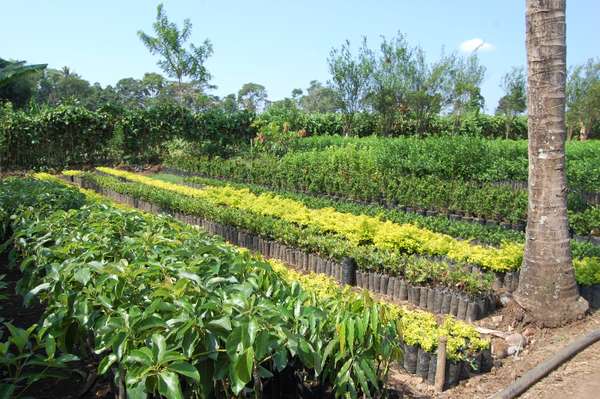
Figure 2. Fruit tree seedlings at a nursery in Guatemala. Source: Cecilia Gonzalez
Nurseries vary in the type of plants they produce. Categories of plants to focus on range from agroforestry species, cash crops such as coffee, and fruit trees (Figure 2). Match the type(s) of plants grown with the community’s needs and with local growing conditions.
When during the year will the nursery operate?
Some plants can be produced seasonally, within a few months. For example, a nursery focused on moringa (Moringa oleifera) could produce seedlings during the dry season and then cease to operate once all the seedlings are distributed or planted out during the rainy season. Water availability and labor constraints can also affect timing of operation. It may only be feasible to run a nursery during months when water is available and when enough people in the community can devote time to maintaining the nursery. On the other hand, running a nursery all year long makes it easier to grow multiple species of trees, since many take more than one year to grow large enough to sell or distribute.
Will it be a short- or long-term nursery?
Even with no resource constraints, not all nurseries are set up to run long term. A nursery could be set up temporarily to supply plants for a limited time to help farmers recover from a catastrophic event.
Long-term nurseries enable communities to evaluate and adopt a variety of plants over time. Commenting on a long-term nursery in Central African Republic, Danforth shared,
…this nursery has had over 500 different species of fruit trees and other beneficial trees. Over the years, the best varieties have been selected, such as jackfruit (Artocarpus heterophyllus), eggfruit (Pouteria campechiana), rollinia (Rollinia delicious), mango (Mangifera indica), avocado (Persea americana), pineapple (Ananas comosus), rambutan (Nephelium lappaceum), coconut (Cocos nucifera), and the list goes on. Having seedlings available all year around has allowed small farmers greater possibilities in getting their own orchards planted or replenishing their vegetables when needed.
Who will own and fund the nursery?
Nurseries differ with respect to ownership, which also relates to how they are funded. Some nurseries are owned by individual farmers or business owners, others are managed by school or church groups, and still others are owned or subsidized by NGO or government institutions (Mbora et al., 2008).
Select a Site
Part of the planning stage is deciding where to locate the nursery. When evaluating a site, take the following factors into account:
How much space will be needed?
How much space will be needed?
The size of a nursery is often constrained by the affordability of land to buy or rent, or the amount of land available through an institution to use. For a given site, the area occupied by existing buildings will influence the amount of space for growing plants. The minimum amount of space needed will depend on how many plants of each species will be produced and how the plants will be grown; the space needed per plant will vary depending on final plant size, container size (for pots grown in pots or poly bags), and bed size (for plants grown on raised beds). You will also need space to access the plants (for watering and distribution), and for structures in which to mix plant media and store tools and equipment.
What resources and technologies will be available?
Resources and technologies available for operating a nursery vary from place to place. Danforth mentioned that the materials used to construct a nursery in South Africa differed from those in the Central African Republic. Plan to use tools and technologies that are appropriate for the area. As an example, watering cans are a better option than complex drip systems in areas where irrigation and plumbing supplies are not available.
What plants will grow?
Site location also limits what will grow, considering the prevailing climate. For instance, tree species that thrive in the lowlands may not grow as well in a mountainous region, and vice versa.
How easy or difficult will management be?
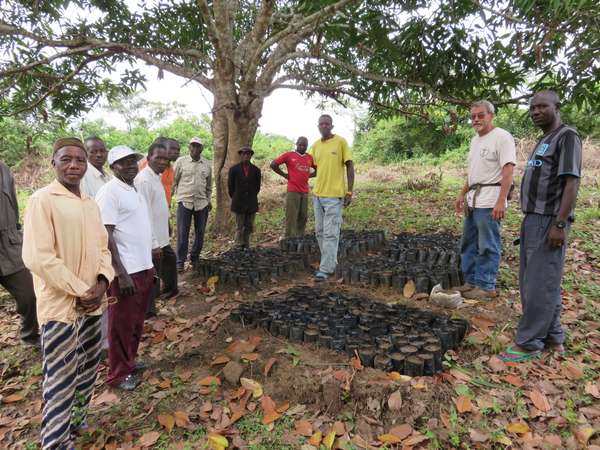
Figure 3. A village nursery located under the partial shade of a tree. Source: Roy Danforth
Site characteristics influence how easy or difficult a nursery will be to manage. Mbora et al. (2008) and Buyinza and Opolot (2016) describe various elements of a good nursery site. Especially important are aspects that relate to plant growth. These include access to a reliable water source, readily available planting media (e.g., soil, sand, and compost), good drainage (to avoid excess moisture and flooding), some shade (Figure 3), and protection from livestock and strong winds. Factors related to workers and customers include roads to and from a site, means of transporting plants and supplies, walking distance between the nursery and tool/supply building(s), visibility for community awareness, and proximity to customers. A good site should also be easy to protect against theft of plants and tools.
How close is the site to other nurseries?
Another factor to consider when selecting a site is the presence or absence of other plant nurseries in the region. Access to other nurseries affects the availability of plant materials. Danforth described a scenario in which the reach and impact of a central nursery was extended by supplying plant material for smaller satellite nurseries. Distance between nurseries also influences market demand for a nursery’s products. If one or more plant nurseries already operate close by, a new nursery could be located further away, or designed to supply plants that are not otherwise available in the area.
Design the Nursery
Good physical design for a nursery reduces the time and labor needed for potting, seeding, grafting, watering, and weeding. A well-designed nursery also streamlines the distribution and sale of plants.
Maps are helpful when designing a nursery (Munjuga et al., 2013). A map of the site can show boundary lines of the property, placement of fencing, access paths or roads, water sources, points of entry, notes or indications of slope and drainage, and existing buildings and trees. In subsequent versions of the map, you can sketch in additional structures, a place to mix soil/media, growing space, and a sales area. You will be able to use the final draft of the map as part of a business plan or project proposal. Useful maps should be to scale, so that distances between points are proportional to actual distances on the ground; 1 cm on a map, for example, could be the equivalent of 10 m on the ground. Indicate the scale somewhere on the map. Also include a directional indicator, which could be as simple as an arrow showing which way is north.
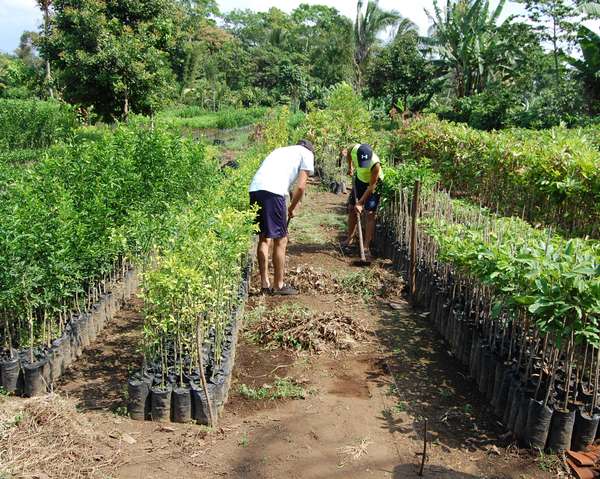
Figure 4. Illustration of walkways for nursery workers to access nursery plants. Source: Cecilia Gonzalez
The size of work areas and growing areas will depend on the number and species of plants to be grown. For example, coconut trees require more space than moringa trees. Make internal work paths wide enough to accommodate workers carrying watering cans, tools, or other equipment (Figure 4). Plant species vary in the amount of sunlight they need. Plan for any needed shade structures, accounting for existing shade from buildings, hills, or trees.
Design and place plant production areas so that rainwater will drain away from them. This will prevent plant roots from getting waterlogged and will keep walkways from becoming muddy. Depending on your location, water for irrigation may need to be pumped uphill, from a well or stream, and then allowed to flow downslope (or from an elevated water tank) towards growing areas. On sloped land, planting areas may need leveling.
Create Schedules, Calendars, and Budgets
As part of the planning process, create a nursery calendar to ensure that seeds will be available before planting time. A comprehensive calendar can also help you estimate costs and expenses, and determine how much labor you will need at different times of the year. Estimate an annual budget that reflects the quantity and quality of plant materials you hope to offer. You will need to obtain materials such as containers, tools, shade cloth, fertilizer, pesticides, and building supplies. The yearly schedule can help you see when you might experience periods of cash flow and when you might need access to credit. It can also include a list of current contacts and suppliers.
| Table 3. Elements of a business plan for plant nurseries. | ||
| About the nursery | Costs | Accounting |
| Name of the nursery Owner and ownership type Location(s) Customers/customer services Plants supplied (species/number) Marketing and production plan |
Startup supplies and equipment Construction costs Maintenance of supplies/equipment Utilities and/or rent Labor (wages and training) Marketing and production costs |
Yearly activity flowchart Expense/income balance sheet |
| Condensed from a training manual by Munjuga et al. (2013). | ||
A small nursery for personal farm use will not require as much planning, but any nursery attempting to serve a community will need a detailed business plan, especially if the nursery will need credit from a bank or investor. Table 3 lists items to include in a business plan.
ACQUISITION OF PLANTING MATERIAL
Plants are multiplied (propagated) by seeds or portions of plant parts such as stems, roots, or leaves. In an FAO resource entitled “Vegetative Propagation [http://edn.link/g2xmy9],” Schmidt (1993) explains concepts and terms related to plant propagation. When planning a nursery, find out—for each species—how much plant propagation material is available, including sources, costs, and at what times of year it is available. This knowledge can help a nursery manager to set realistic production goals.
Before obtaining large quantities of seeds, we suggest that you do a germination test on a sample amount of seed. This will help you decide from which suppliers to obtain seeds, and will tell you roughly how much seed you will need to achieve desired plant populations.
If possible, source propagation material nearby; this will contribute to the local economy and minimize transportation/shipping costs. Prioritizing the propagation of plants within a region or country will also help conserve and promote native species. Be willing to pay fair prices, and obtain permission to collect seeds, cuttings, and other planting material from individuals and property owners.
While there are clear advantages to obtaining propagation material as close to the nursery as possible, the ability to bring in seeds or other plant parts from other countries expands a nursery’s options for species and varieties to plant and introduce to an area. Carter commented, “...international workers often have a great advantage in making available plant genetics that can make a huge difference in a region.” When sourcing seeds internationally, obtain the necessary permits (e.g., import permits and phytosanitary certificates) and work with authorities to prevent the spread of plant diseases and invasive species. Before promoting new plant species and varieties, evaluate them in small test plots to make sure they will grow well under local conditions.
NURSERY OPERATION
Daily and periodic tasks
Running a nursery involves many recurring tasks. Daily plant maintenance involves watering, weeding, and fertilizing. Over time, you will need to move plants into larger pots to accommodate root growth. Depending on the crop and long-term growing requirements, plants growing under nursery shade structures may need acclimation to more sunlight to prepare them for planting outside the nursery. Routine sales-related tasks include assisting customers with plant selection and providing receipts. Inventory records need updating as plants rotate in and out of the nursery.
Some tasks are monthly or seasonal, and may require analysis and planning. Decisions involving the purchasing of supplies are influenced by availability, use rate, and how well various products worked in the past. Planting decisions should account for seasonal conditions and customer needs. Seeds will need to be collected or purchased. Then there are the long-term management plans that require you to re-evaluate previous objectives and update the business plan. Wilkinson and Landis (2014) suggest the use of a checklist to record tasks such as those in Table 4.
| Table 4. Daily, seasonal, and long-term tasks in operating a nursery. | ||
| Daily tasks | Seasonal tasks | Long-term planning tasks |
| Planting Watering Pest control Repotting Weeding Record keepingZ Plant sales Plant delivery/transport Customer feedback |
Monitoring seed and supply sources Acquiring seeds, growing media, tools, and equipment Maintaining nursery beds Visiting with customers to track: success/failure of nursery plants satisfaction levels Training seasonal workers |
Projecting future costs/income Expanding customer base Infrastructure updates Future plant offerings |
| Adapted from a nursery management checklist by Wilkinson and Landis (2014). | ||
| ZConsider keeping records of plant performance, weather, customer information, and inventory. | ||
Product Marketing
Advertising, promotion, and customer service are all part of a marketing strategy (Munjuga et al., 2013). When you advertise, you let people know what you have to offer, when it is available, where to get it, and the cost (or lack of cost) of the product. Promotion goes one step further, combining education and influence to “promote” the acceptance of your product. Customer service refers to the way you assist customers during and after getting the plants. Good customer service encourages repeated participation in the future.
Advertising
Positive word-of-mouth conversations among community members provide the best and cheapest advertising. By contrast, negative gossip about the nursery’s products or services results in the worst advertising. Negative reactions are usually the result of poor seedling survival or plant performance. Other negative reactions can result from species becoming invasive, or requiring more labor than is returned in benefits. Superior plant quality is the best advertising a nursery can get, and every plant sent out into the community is an ambassador for the nursery. Spend the time to find and promote superior varieties, since trees that survive but are slow growing and have low productivity waste space and time in the end. Instruct nursery managers to dispose of inferior plants, and to invest in inputs such as water and fertilizer to produce quality plants. High-quality trees improve livelihoods.
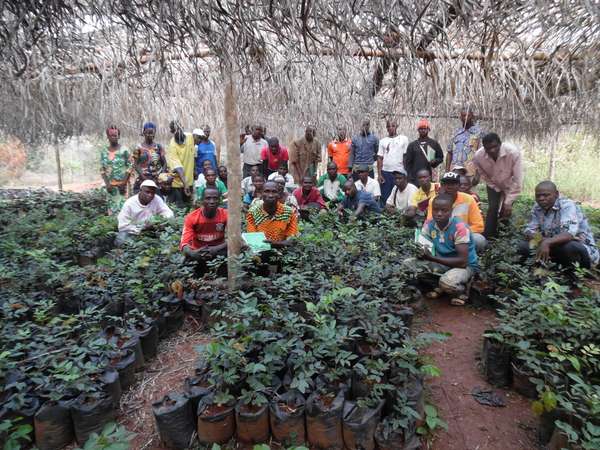
Figure 5. Nursery management seminar participants, illustrating the concept of promotion through education. Source: Roy Danforth
Promotion
Nursery promotion entails educational outreach and public relations. Choose participatory methods of education (Figure 5), rather than a top-down approach to technology transfer. Horticultural expertise and in-depth knowledge of the plants being grown builds trust and respect for the nursery and its products. Curiosity and a willingness to learn from farmers helps build relationships and leads to ideas for nursery improvements.
Lead farmers and farmer-to-farmer field schools (explained by de Oliveira and Terzic, 2013) make excellent community partners and are a good source of information and insight. Providing free seed and seedlings of new crop options to these partners allows for visible field trials that reinforce the collaborative nature of farm innovations. Species or varieties that grow well for lead farmers can be offered to more customers the following season.
Customer service
Provide customers—including farmers, reforestation planters, and home gardeners—with information on how to plant and care for the plants they receive. All the nursery’s efforts to grow strong, healthy plants will be for naught if there is neglect in the transportation, planting, and care of the plants. For each plant species, explain the following:
- How to care for the plants during the trip from the nursery to the planting site
- The size and depth of the planting hole
- What kind and quantity of amendments to add when planting
- How to protect the plants from pests, livestock, wildlife, sun, and wind
- Fertilizer, mulch, and water requirements
Seedling survival and growth will decline if plants are not watered, cared for properly before planting, or livestock are allowed to browse them. A nursery is not responsible for customers’ negligence, but a little pre-planting instruction can help reduce complaints and improve customer success with nursery plants.
Customer feedback need not be limited to resolving complaints. If you are inquisitive and concerned about customer success, you are likely to have many productive conversations and may even be able to recruit new lead farmers.
Product Sales and Distribution
Nursery plants can be sold and transported in several ways. For example, you can sell plants individually or in small numbers at retail prices; sell them in large numbers at lower wholesale prices; or give them away through non-profit networks. You can distribute plants at the nursery with customers providing their own transportation; deliver them to farm or distribution points; or arrange for participants of community nursery projects (e.g. located at churches and schools) to deliver them to households. All of these options have pros and cons, and you will need to decide what works best in your situation.
Retail
Retail prices tend to be higher than wholesale prices, because retail sales require more customer interaction and service, record keeping, and potentially higher delivery costs. When setting retail prices, account for the costs of inputs and labor, prices at other nurseries in the area, the local demand for plants, the financial capacity of potential customers, and plant quality.
If a significant percentage of your nursery’s sales will be onsite and retail, allocate adequate space for customers to browse items that are for sale. Make sure retail sales space is highly visible to the public and easily accessed by vehicles.
Wholesale
Plants sold at wholesale have lower prices—in comparison to retail prices— due to the lower levels of labor per plant (for customer service, record keeping, and transportation). You can more quickly explain how to care for a particular crop species to one customer buying 100 plants than you can explain it to 100 customers buying one plant each. Producing large numbers of plants requires efficient use of space and labor. Nurseries devoted exclusively to wholesale do not require an onsite sales area; however, they will usually need to take care of transporting seedlings to farms or other distribution sites. Wholesale or high-volume nursery production is used primarily for reforestation projects or to supply multiple regional distribution points.
Non-profit production
People tend to take better care of plants that cost them something. In areas with high poverty, however, it may be appropriate to provide plants free of charge or at low prices. Non-profit nurseries rely on outside funding to operate. Projects that target food security, poverty reduction, and land restoration often incentivize community participation through free plant distribution. As livelihoods improve, non-profit nurseries should take steps to reduce their supply of free plants, so that people can begin producing and selling their own plants without having to compete with subsidized nurseries.
MATERIALS AND TECHNIQUES
Tools and resources vary from place to place, especially in resource-limited settings. Decisions about the types of potting media, containers, fertilizers, irrigation, and pest control are too complex and situation-dependent to cover in detail here, but the following sections give basic guidelines.
Planting media
In a nursery, seeds or seedlings grow in soil or other mixtures referred to as “media.” Nurseries use soil mixtures based on what plants need (which can vary between species) and on the cost and availability of the ingredients.
Criteria for good media
A nursery cannot sustain long-term operations without a ready supply of planting media. Ingredients should be affordable, available nearby, and easy to mix and transport.
Quality planting media supports healthy plant growth. It should be free of soil-borne diseases, pests, and weed seeds, as well as large particles that hinder the emergence of seedling leaves. Quality planting media should also have physical and chemical properties that favor plant growth.
A mix with good physical properties will have a texture that is light/porous enough to provide air for plant roots while still holding water and nutrients well and keeping plants from falling over in their containers. A fine-textured substrate holds water and nutrients but is prone to waterlogging, while coarse-textured media drains well but dries out quickly and loses nutrients to leaching. As you consider various kinds of media, be sure to balance water and nutrient retention with adequate drainage.
Chemical properties of a nursery mix influence its capacity to supply nutrients to growing plants. A good mix contains nutrients that plants can easily access as needed. Nutrient availability is influenced by pH, with nutrients being most accessible to plants when the pH of the substrate is near neutral (6.5 to 7.0). Nursery media does not usually need to be highly fertile, since the plants growing there will soon be transplanted in fields or gardens. Danforth advised,
The best soil needs to be dark, meaning it contains already decomposed organic material. This usually guarantees that it will be somewhat fertile, but what is more important is that the soil stays loose [for drainage and workability], whether wet or dry.
Media ingredient options
Sand and gravel
Sand, fine gravel, or a mixture of the two facilitate drainage of excess moisture. Look for sand in riverbeds. Carter mentioned his use of pumice sand in Guatemala. Pumice sand is found volcanic areas, is inert and stable (like sand, it does not decompose), and is porous (Landis et al., 2014a).
Topsoil
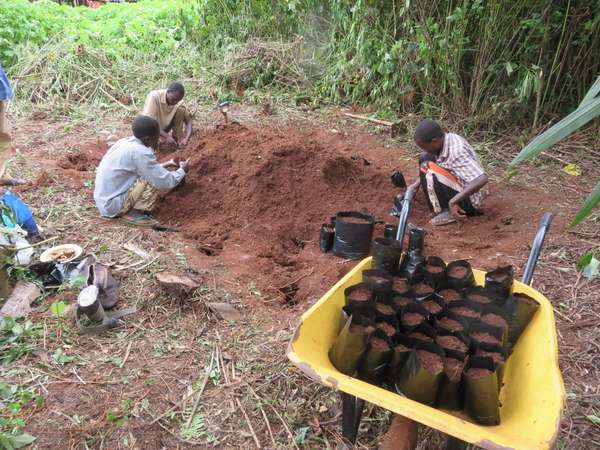
Figure 6. Filling of nursery sacks with soil underneath ground-covering plants and weeds. Source: Roy Danforth
Topsoil contains a mix of inorganic (sand, silt, and clay) and organic particles (Figure 6). Look for topsoil in forested areas, since healthy tree growth is an indicator of good soil qualities (Buyinza and Opolot, 2016). The higher the clay content, the finer the soil texture will be. Clay holds nutrients tightly and has little porosity (air space between particles), so too much of it reduces nutrient availability and the drainage of water. Conversely, the more sand soil contains, the coarser it will be. Soil that is too sandy will not retain water and nutrients well. Look for topsoil that is balanced in terms of texture.
Organic matter
Organic matter (e.g., plant residue or animal manure) enhances nursery media in multiple ways. It absorbs and retains moisture and nutrients, slowly releasing them to plants over time. While clay retains moisture and nutrients, organic matter is more porous and is therefore lighter and easier to transport.
A nursery should not compete with local farmers for organic matter. Farmers often rely on the organic matter from crop residues and cattle manure generated in their fields through cropping and grazing activities. Alternative sources of organic matter could include chopped banana stalks, coconut husks (also called coir), coffee shells, kitchen waste, peanut shells, rice hulls, sugar cane bagasse, worm castings, and manure (e.g., from chicken coops or pig pens) that farmers are unlikely to gather and transport to their fields. You might be able to gather some plants around the nursery, such as grass and weeds. To avoid adding weed seeds to planting media, collect weed biomass before the weeds flower and start to produce seeds. You could also plant nitrogen-fixing trees such as gliricidia (Gliricidia sepium) around the border of a nursery, for a continual source of organic material and as a living fence.
As a rule, organic matter should be well decomposed. Organic matter that is not decomposed can limit nitrogen availability, causing leaf yellowing and stunted growth. This is especially true for woody material like sawdust or straw, which has a high carbon to nitrogen ratio
(> 30 parts carbon to 1 part nitrogen). Living organisms require nitrogen to synthesize molecules like proteins. If soil microorganisms cannot obtain enough nitrogen from high-carbon material, they will get it from elsewhere in the soil, making nitrogen inaccessible to plants.
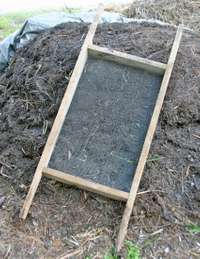
Figure 7. Compost/media sifter made with hardware cloth. Source: ECHO staff
Composting is the fastest way to decompose organic matter. In an article titled A Fresh Look at Life below the Surface, Blank (2007) describes several methods for making compost. When relying on compost, account for the fact that fresh material shrinks down to about 40% of its original volume when completely composted (Wightman, 1999). Pass compost through a screen (5 to 6 mm mesh) to remove large particles (Figure 7). You will need to shred sugarcane bagasse before screening it. Also note that actively decomposing organic material generates heat; to avoid burning nursery plants, wait until it is cool to the touch.
To add porosity to planting media, people sometimes add coconut coir and rice hulls in a non-composted form. As mentioned earlier, the high carbon to nitrogen ratio of these materials can limit nitrogen availability for the nursery plants. This is why coconut coir and rice hulls are often used in combination with nitrogen sources such as compost, decomposed manure, or mineral fertilizer.
Consider making rice hulls and woody materials into biochar before adding them to planting media (see Hugill, 2013 for more information). Biochar is highly porous and retains nutrients well. To increase its capacity to release nutrients over time, consider ‘charging’ it first, by mixing it for several months with compost high in nutrients.
Media mixtures
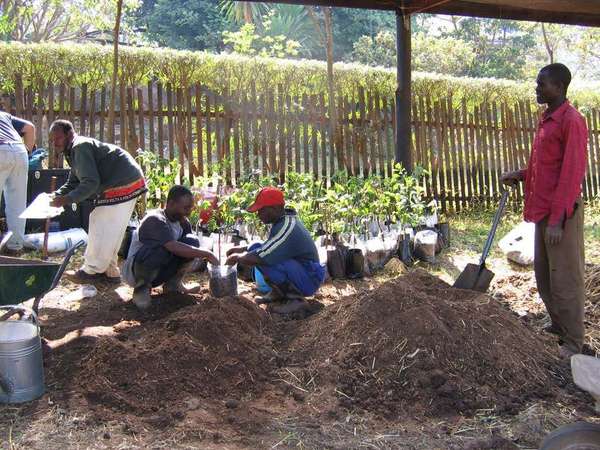
Figure 8. Mixing of nursery media. Source: ECHO staff
Sourcing, gathering, and mixing ingredients is a continual cycle in running a nursery (Figure 8). Find out what ingredients are available nearby, and learn about pros and cons for their use. Topsoil, for instance, contains nutrients that plants need and also helps prevent plants in containers from falling over. However, topsoil may harbor plant diseases or pests, and it is heavy to transport. Also, where topsoil is excavated for nursery use, the soil that remains will be less fertile and more prone to erosion. You can reduce the quantity of topsoil needed for planting media by mixing it in various ratios with other ingredients like sand and compost (Table 5).
| Table 5. Planting media ratios of soil, sand, and compost for soils of different textures (Wightman 1999). | |||
| Soil texture | Soil | Sand | Compost |
| Heavy (clay) soils | 1 | 2 | 2 |
| Medium (loam) soils | 1 | 1 | 1 |
| Light (sand) soils | 1 | 0 | 1 |
You can assess the suitability of soil-based planting media using the “ribbon test” method (USDA-NRCS, 1999). First, add water to about 25 g of media to form a moist ball. Squeeze the ball of media between your thumb and index (first) finger, pushing the soil over your index finger to form a ribbon. ECHO nursery staff in Florida recommend a ribbon length of 1.5 to 2 cm as being ideal. If the ribbon breaks at less than 1.5 cm, it is too sandy; in this case consider adding finer-textured soil or compost. If you can form a ribbon longer than 2 cm, add sand or compost to increase aeration and drainage. The ribbon test is mostly applicable for media in growing sacks/containers; media used to germinate seedlings or to root cuttings is often more coarse.
Carter affirmed that quality substrate involves prevention and control of soil pathogens. Regarding the loss of plants due to diseases, he commented, “We throw away too many plants that never make it to salable quality.” Pasteurization and solarization are two options for killing weed seeds, nematodes, and harmful fungal and bacterial pathogens. Both these processes involve heating the media up to 60°C (for 30 minutes); heating beyond this threshold will kill beneficial organisms. Pasteurization and solarization are labor intensive but viable options for managing disease problems linked to planting media.
Where ready supplies of organic ingredients exist, you might consider using soilless media. In many parts of the tropics, rice hulls and coconut coir are plentiful; the latter can be found in various forms (e.g., chunks, dust, or shredded fibers). Table 6 shows several mixes made with these ingredients, trialed by ECHO in Asia for seedling production. The mixes showed promise, but rice hulls and coconut coir were more effective when a nutrient component such as compost or manure was added (Gray and Bicksler, 2013).
| Table 6. Soilless mixes trialed by ECHO in Asia. | |
| Mix of components | Ratio |
| Rice hulls, shredded coconut coir | 1:1 |
| Rice hulls, chunked coconut coir, shredded coconut coir | 1:1:1 |
| Charred rice hullsZ, rice hulls, shredded coconut coir | 1:1:1 |
| Adapted from Gray and Bicksler (2013). | |
| ZRice hulls converted to biochar. | |
The above is not exhaustive in terms of ingredients and potential mixes. In their discussion of growing media, Landis et al. (2014a) provide more in-depth information on ingredients and properties of various types of nursery media. Experiment with various ingredients and ratios of ingredients until you are satisfied with the resulting plant growth and quality.
Fertilizers
Composted manure, crop and kitchen wastes, and decayed leaf matter supply nitrogen, phosphorus, potassium, and minor nutrients. Most other sources of organic matter are low in these nutrients, and you will need to add fertilizer. Purchased (synthetic) fertilizers, in the form of pellets that dissolve in water, can be added to irrigation water or broadcast over seedbeds. Natural fertilizers, including manure and compost, can be applied as a top dressing or soaked in water and used as a fertilizer ‘tea.’
To ensure the health and quality of nursery plants, be intentional about supplying nutrients to your plants. Also, add fertilizer if you see signs of nutrient deficiencies in the leaves or shoots of seedlings (in the form of yellowing, spots, or stripes). Both natural and synthetic fertilizers can damage young plants if used in concentrated forms. Dilute them with water as necessary to avoid “burning” the plants.
Planting
From seed
Many nursery plants are started from seed. These include most agroforestry species (e.g. gliricidia), coffee, moringa, and fruits like papaya (Carica papaya) and passion fruit (Passiflora edulis) with traits that are consistent from one generation to another (Love et al., 2017). Seeds of some fruits (e.g., avocado and mango) are planted for later use as grafting rootstock (explained in the next section).
Seeds of most tropical plants germinate readily after planting in moist soil, but seeds of some species have protective mechanisms that prevent germination until conditions are favorable. This characteristic is called seed dormancy. In the tropics, dormancy is usually due to hard seed coats. Soaking seeds in water and scarifying them (filing or nicking the seed coat) are two common approaches to overcoming seed coat dormancy; both of these allow water to enter the seed so that germination can begin. Danforth pointed out that many nitrogen-fixing reforestation trees are heat treated to break dormancy, by boiling the seeds for only one minute and then soaking them overnight. Smith et al. (2002) present more in-depth information on dormancy and seed treatments in chapter five of the Tropical Tree Seed Manual.
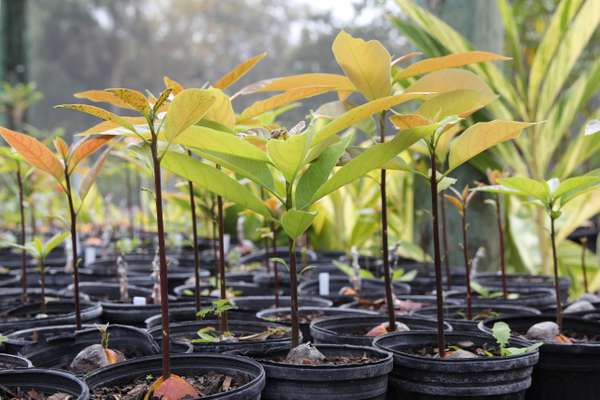
Figure 9. Avocado (Persea Americana) seeds planted in pots. Note that they are not completely buried. Source: Nate Flood
Seeds are generally sown to a depth of one to three times the diameter of the seed.
Exceptions include the seeds of fruits such as avocado, coconut, and mango, which are not usually buried (Figure 9). In her book Fruits of Warm Climates, Morton (1987) explains how to plant seeds of these and other tropical fruits.
From vegetative plant parts
Some plants are propagated using vegetative plant parts instead of seeds. Vegetative propagation is useful for producing plants that have desirable traits identical to parent plants, and for multiplying plants that are hard to grow from seed. Perennial vegetables like chaya (Cnidoscolus aconitifolius) and katuk (Sauropus androgynus) are grown from cuttings, since chaya does not set seed readily and katuk seeds are difficult to germinate. Bananas and pineapple (Ananas comosus) are grown from offshoots separated from parent plants.
Fruits like barbados cherry (Malpighia puncifolia), guavas (Psidium guajava), and lychee (Litchi chinensis) are started using ‘air-layering,’ a practice in which roots are formed on one or more stems before severing the stem(s) from the parent plant. Other fruits like avocado and mango are typically grafted, which involves joining a seedling (rootstock) to a piece of a mature tree (called scion or budwood) of the same species. Wasielewski and Balerdi (2019) explain vegetative propagation methods in more detail in a University of Florida extension publication called Tropical and Subtropical Fruit Propagation. You will need to learn which propagation technique is best for each species that you intend to grow. Grafting and other methods of vegetative propagation will take time to learn well.
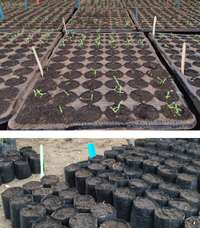
Figure 10. Flats (top) and nursery sacks (bottom) as examples of planting containers. Source: Stacy Swartz
Into containers or planting beds
When starting seeds with low germination or low vigor, plant them into seedbeds or containers (Figure 10) set apart for starting seedlings (Buyinza and Opolot, 2016). Sow the seeds densely enough that you will be able to thin the weak or stunted seedlings and still have a desired population of healthy seedlings. Then transplant the healthy seedlings to beds or containers, to be grown out in the nursery. Consider this same approach for seeds and cuttings that require frequent watering; plant them in coarse media that drains well, to prevent disease associated with high moisture. For species with no special germination or rooting requirements, plant seeds directly into the main growing areas of the nursery. By not having to transplant seedlings from one part of the nursery to another, you will save time and labor while eliminating the possibility of injuring roots during a transplant.
Seedlings grown in planting beds can be dug up and sold or distributed as bare-root seedlings. Bare-root seedlings are light and easy to transport, an important consideration for farmers who must carry seedlings long distances on foot or on the backs of donkeys. Wrap the roots in moist cloth to keep them from drying out in transit. Seedlings in pots or other containers are heavier than bare-root seedlings, but the soil around the roots will keep plants from wilting, increasing the percentage of plants that survive after being planted in their final location. Instruct recipients of container seedlings to keep the soil around the roots intact while planting.
Container types and management
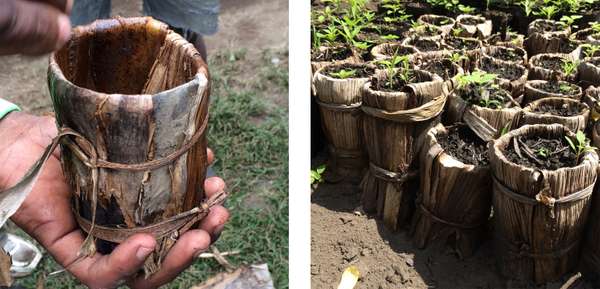
Figure 11. Planting containers made with banana leaves. Source: Stacy Swartz
You can use many types of containers to pot plants in a nursery, including poly tubes, plastic and ceramic pots, and recycled cans and containers. Poke drainage holes into the bottom of recycled bottles, jugs, or plastic bags that do not already have them. Consider making containers from banana leaves (Figure 11) and bamboo if other materials are not available and you can justify the labor involved in making them. Match the size of the container to accommodate plant roots (Landis et al., 2014b explain factors in selecting appropriate containers). For species that respond badly to transplanting stress, sow directly into containers (Buyinza and Opolot, 2016).
Plant roots will eventually reach the bottom of their containers and grow into the ground, which can make the containers difficult to move without injuring the plants. To minimize this, Flores mentioned that they move nursery bags or pots around every two or three months. They move containers with rootstock one week before grafting, to avoid cutting any roots on the same day that grafting is done. They also move containers as needed to separate weak plants from stronger plants, to keep the latter from shading out the former.
Sun Protection

Figure 12. Use of bamboo tied with string (top) or palm fronds (bottom) to shade nursery trees. Source: Dan Turk (top) and Roy Danforth (bottom)
Seedlings often require protection from full sun, especially for species that are naturally part of the understory. Shade reduces watering requirements, and the stress to seedlings that occurs when they are transplanted from germination areas to growing containers. Partial shade is better than complete shade; the latter can raise humidity which can increase the proliferation of plant diseases. Also, too much shade causes etiolation, which means a plant’s main stems grow spindly and weak. Prune tree branches if necessary, to allow more sunlight to get through. Danforth and Turk identified palm fronds and bamboo as useful materials for providing shade (Figure 12). You can adjust the number and placement of palm fronds on a supporting structure to obtain desired levels of shade.
Watering
Your water supply needs to be “sweet” water (non-saline), free of debris, and not harboring diseases or pesticide residues. The water pH should be close to neutral (7.0), not too acidic or alkaline.
Supplying water to your nursery can be as simple, cheap, and low tech as carrying buckets of water to beds and sprinkling it on by hand. If you have the resources, you can choose an expensive and complex irrigation system with pumps, hoses, and mechanized sprinklers; this will minimize labor once installed, but requires a lot of startup capital.
Deliver water to the soil surface (as opposed to the leaf area) in a low-pressure mist, drip, or stream that does not wash away soil media or damage young plants. Provide enough water to soak the growing medium thoroughly but without waste. For hand watering nursery plants in sack containers, Danforth commented,
One must point the hose or nose of the watering can down in the sack and fill to the top of the sack, provided the sack was filled with soil about 5 cm from the top. Then a decent amount of water gets into the sack and seeps down.
In arid regions, you may need to water plants two or three times a day. Water in the morning or late afternoon, to avoid watering during the hottest time of day when water loss due to evaporation is highest (Wightman, 1999).
Pest Control
A wide range of potentially damaging pests can threaten nursery production. These include:
- Insects – aphids, caterpillars, locusts, mites, termites, etc.
- Bacterial and viral diseases – wilts and mosaics
- Fungal diseases – molds and rots
- Rodents – mice, rats, voles
- Wildlife and livestock – birds, goats, cattle
- Humans – both theft and vandalism
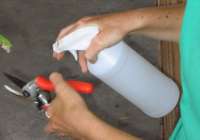
Figure 13. Sanitizing a pruning tool. Source: ECHO Staff
Most insect pests and plant diseases are specific to particular plant species and environments, so you will need to research and combat them with locally appropriate measures. Landis et al. (2014c) discuss principles and practices for managing insects and diseases in tropical nurseries. As mentioned earlier, solarization and pasteurization can help prevent diseases. As a good preventative sanitation practice, spray clippers with alcohol to avoid spreading plant diseases while grafting and pruning (Figure 13). You may be able to control rodents by keeping cats within the nursery. To keep browsing animals and thieves out of a nursery, consider fences, walls, guards, and guard dogs. As Danforth observed, “all it takes is one time for a herd of goats to demolish the whole nursery!” Danforth suggested weaving local palm fronds into mats to make fences tall enough (over 1.5 m) to keep goats from jumping over them. With respect to theft, try to find a balance between visibility and protection, so that the public knows about the nursery, but it is difficult to rob (Mbora et al., 2008).
Plant Conditioning
Before they are planted out, seedlings in a nursery need to be “hardened” (acclimated) to the level of sunlight and soil moisture they will experience in the field. Hardening should be a gradual process, during the last few weeks before plants leave the nursery, to avoid shocking the plants, which would cause unnecessary stress and potential loss. Little by little, move plants out of the shade. An advantage of shading with screens, mats, branches, or cloth is that you can gradually remove them to expose plants to increased sun, rather than having to move the plants.
While gradually exposing plants to more sunlight, you can also acclimate them to less soil moisture. Mbora et al. (2008) suggest that, two to three weeks before planting seedlings in the field, you reduce watering frequency from twice per week to once per week. Wightman (1999) suggests starting water reduction four weeks before field planting, allowing the soil to dry out several times before then and watering well the day before the plants leave the nursery to avoid water stress during transport. Adapt your water hardening approach to your situation, recognizing that plant conditioning for less soil moisture is more critical for dry than wet climates.

Figure 14. Grafted fruit trees in Tanzania with plastic coverings to keep the graft union from drying out. Source: Stacy Swartz
Condition newly grafted trees with respect to both sunlight and humidity. Initially, humidity keeps the graft union from drying out, which is necessary for grafting success (Figure 14). After the graft is established, remove plastic coverings or wrappings, and expose the trees to more sunlight to transition the trees to less humidity. The drier conditions will help prevent the development of plant diseases.
CONCLUDING THOUGHTS
Tree nurseries vary in terms of scale, who they serve, and the plants they supply. Despite their differences, all nurseries benefit from careful consideration of the various elements of design, planning and operation covered in this document. Plants supplied by nurseries can potentially open new streams of income in nearby communities. Nursery workers and volunteers can gain knowledge and skills that might eventually help them operate their own nurseries. Regarding the impact of his nursery in Guatemala, Carter stated,
“About half of the local village works at the nursery, and most of them have their own nurseries.” Success comes, in large part, through constantly learning about local conditions and plant species being grown. Much of this kind of learning comes through interaction with like-minded practitioners doing similar work. You will also continue to learn by reading literature, talking with local farmers, observing and experimenting, and otherwise gaining first-hand experience.
REFERENCES AND FURTHER READING
References cited
Blank, D. 2007. A fresh look at life below the surface. ECHO Development Notes No. 96.
Buyinza, J., and V.I. Opolot. 2016. Tree Nursery Establishment and Tree Management: Training Manual for Community Tree Nursery Operators and Tree Farmers. World Agroforestry Centre.
de Oliveira, W. and D. Terzic. 2013. Manual: Farmer Field School for Extension Workers. Food and Agriculture Organization.
Gray, H., and A. Bicksler. 2013. Creating an optimum potting mixture for resource-constrained growers in Thailand. ECHO Research Note No. 8.
Hugill, B. 2013. Biochar: an organic house for soil microbes. ECHO Technical Note No. 75.
Landis, T.D., D.F. Jacobs, K.M. Wilkinson, and T. Luna. 2014a. Growing media. In: Wilkinson, K.M., T.D. Landis, D.L. Haase, B.F. Daley, and R.K. Dumroese (eds). Tropical Nursery Manual. Chapter 6, pp. 101-121.
Landis, T.D., T. Luna, and R.K. Dumroese. 2014b. Containers. In: Wilkinson, K.M., T.D. Landis, D.L. Haase, B.F. Daley, and R.K. Dumroese (eds). Tropical Nursery Manual. Chapter 6, pp. 123-139.
Landis, T.D., T. Luna, R.K. Dumroese, and K.M. Wilkinson. 2014c. Problem prevention and holistic pest management. In: Wilkinson, K.M., T.D. Landis, D.L. Haase, B.F. Daley, and R.K. Dumroese (eds). Tropical Nursery Manual. Chapter 14, pp. 273-291.
Love, K., R.E. Paul, A. Cho, and A. Kawabata. 2017. Tropical fruit tree propagation guide. Fruit, Nut, and Beverage Crops F_N-49. College of Tropical Agriculture and Human Resources, University of Hawai`i at Mānoa.
Mbora, A.M., J-P.B. Lillesø, and R.H. Jamnadass. 2008. Good Nursery Practices: A Simple Guide. World Agroforestry Centre. 36 pp.
Morton, J.F. 1987. Fruits of Warm Climates. Creative Resource Systems Inc.
Munjuga, M.R., A.N. Gachuiri, D.A. Ofori, M.M. Mpanda., J.K. Muriuki, R.H. Jamnadass, and J. Mowo. 2013. Nursery Management, Tree Propagation and Marketing: A Training Manual for Smallholder Farmers and Nursery Operators. World Agroforestry Centre.
Schmidt, L. 1993. Vegetative Propagation. UNDP/FAO Regional Project on Tree Breeding & Propagation.
Smith, M.T., B.S.P. Wang, and H.P. Msanga. 2002. Chapter 5: Dormancy and Germination. In: Tropical Tree Seed Manual (J.A. Vozzo, ed.) USDA Forest Service, Agriculture Handbook 721.
USDA-NRCS (U.S. Department of Agriculture, National Resources and Conservation Service). 1999. “Guide to Texture by Feel.” https://www.nrcs.usda.gov/wps/portal/nrcs/detail/soils/edu/?cid=nrcs142p2_054311 (accessed 2 February 2021).
Wasielewski, J. and C. Balerdi. 2019. Tropical and Subtropical Fruit Propagation. University of Florida IFAS Extension HS1349.
Wilkinson, K.M. and T.D. Landis. 2014. Nursery management. In: Wilkinson, K.M., T.D. Landis, D.L. Haase, B.F. Daley, and R.K. Dumroese (eds). Tropical Nursery Manual. Chapter 19, pp. 351-359.
Wightman K.E. 1999. Good Tree Nursery Practices: Practical Guidelines for Community Nurseries. World Agroforestry Centre (ICRAF).
Further reading
Container types and the distinction between bare-root and container nurseries: Jaenicke, H. 1999. Good Tree Nursery Practices: Practical Guidelines for Research Nurseries [http://edn.link/hkeht7]. International Centre for Research in Agroforestry. Majestic Printing Works
Links related to supplying water
- Rural Water Supply Network [http://edn.link/xye2q3]
- Gooder, R. 2010. Ten low-cost irrigation techniques [http://edn.link/4yhjy2]. Engineering for Change.
Illustrated practices for raising tree seedlings: Danforth, R., A. Boss, D. Boss, and P. Noren. 2015. Agroforestry in the Central African Home Garden: A Manual for Tree Gardening in the Humid Tropics [http://edn.link/agroforestryinthcentralafricanhomegarden].
General information including weeding options and nutrient analysis of organic fertilizers: Diver, S., and L. Greer. 2000. Sustainable Small-scale Nursery Production [http://edn.link/ej2c94]. Appropriate Technology Transfer for Rural Areas.